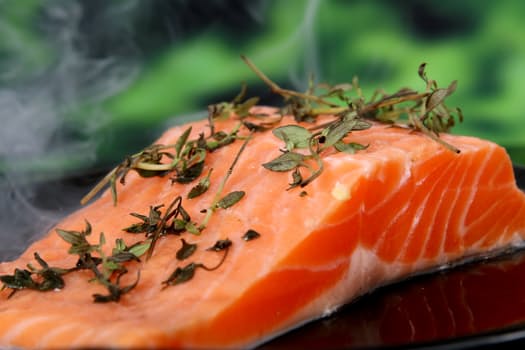5 Food Safety Myths You Shouldn’t Believe

We’ve covered our fair share of food safety practice myths. However, as the weather starts to cool down and more people are making their way out to restaurants more frequently, we think it’s important that restaurant owners and their employees keep these myths in mind while practicing safe service this fall.
If It Looks Okay, It’s Safe to Eat!
One of the scariest things about pathogens that cause food poisoning is that it is often undetectable. If food looks and smells good, people are going to assume it’s safe to eat.
However, the true basis of food being safe to eat involves the storage, handling, and preparation of food more than its appearance, smell and “best by” date.
So, whenever serving any type of food, make sure to take note of the following:
- There has been no potential for cross-contamination
- The food was properly thawed
- The food handler washed their hands before preparing and practices proper hygiene
Always Wash Raw Chicken Before Cooking
For some reason, so many people believe that it’s hygienic to wash raw chicken before cooking it. Not only are you not washing bacteria off of the chicken itself, but as the water splashes off of the meat, bacteria quickly spread across your cooking surfaces, creating a potential contamination issue.
Plastic Cutting Boards Are the Most Hygienic Choice
While there is a regular debate that pits the safety of plastic cutting boards against wooden boards, the truth is that it doesn’t matter! There really isn’t any proof that one material is better than the other when it comes to food safety.
The actual fact in this myth is that all cutting board safety relies on the hygienic practices of the person that cleans them. As long as they are washed and stored properly, your cutting boards stand a better chance of protecting customers from foodborne illness; no matter the material it’s made from.
Food Left Out to Thaw is Safe After Cooking
Leaving food out to thaw on a counter isn’t a safe food practice by any means. It’s well known that this practice makes food a magnet for bacteria and foodborne illness cases.
Some people wrongfully believe that cooking poorly-thawed food can burn off collected bacteria and make the food safe. Unfortunately, bacteria like E. coli and Staphylococcus can remain toxic in foods even after proper cooking.
So, if it’s been left out to thaw, it’s just best to send it to the bin and start over.
You Cannot Refreeze Thawed Food
This is definitely a quality practice that most restaurants would want to stay away from. But the truth is that the threat of bacteria comes with the thawing methods used on the frozen food.
If a cook is in a pinch and accidentally thaws out too much of a frozen batch of food, so long as the food was thawed safely (i.e. refrigerator, cold water), it can be refrozen and used again at a later date.
Make Sure Your Employees Practice the Truth, With Certified On The Fly
If you have new employees onboarding this fall or know that your current crew needs their food handler certification updated, save time and money on training with Certified On The Fly.
Our course is entirely online and allows participants to work at their own pace. This means no missed shifts, no lag in productivity, and the opportunity to learn best food safety practices from the comfort of their own home.
Register online today to start the online certification process.
Back to Blog